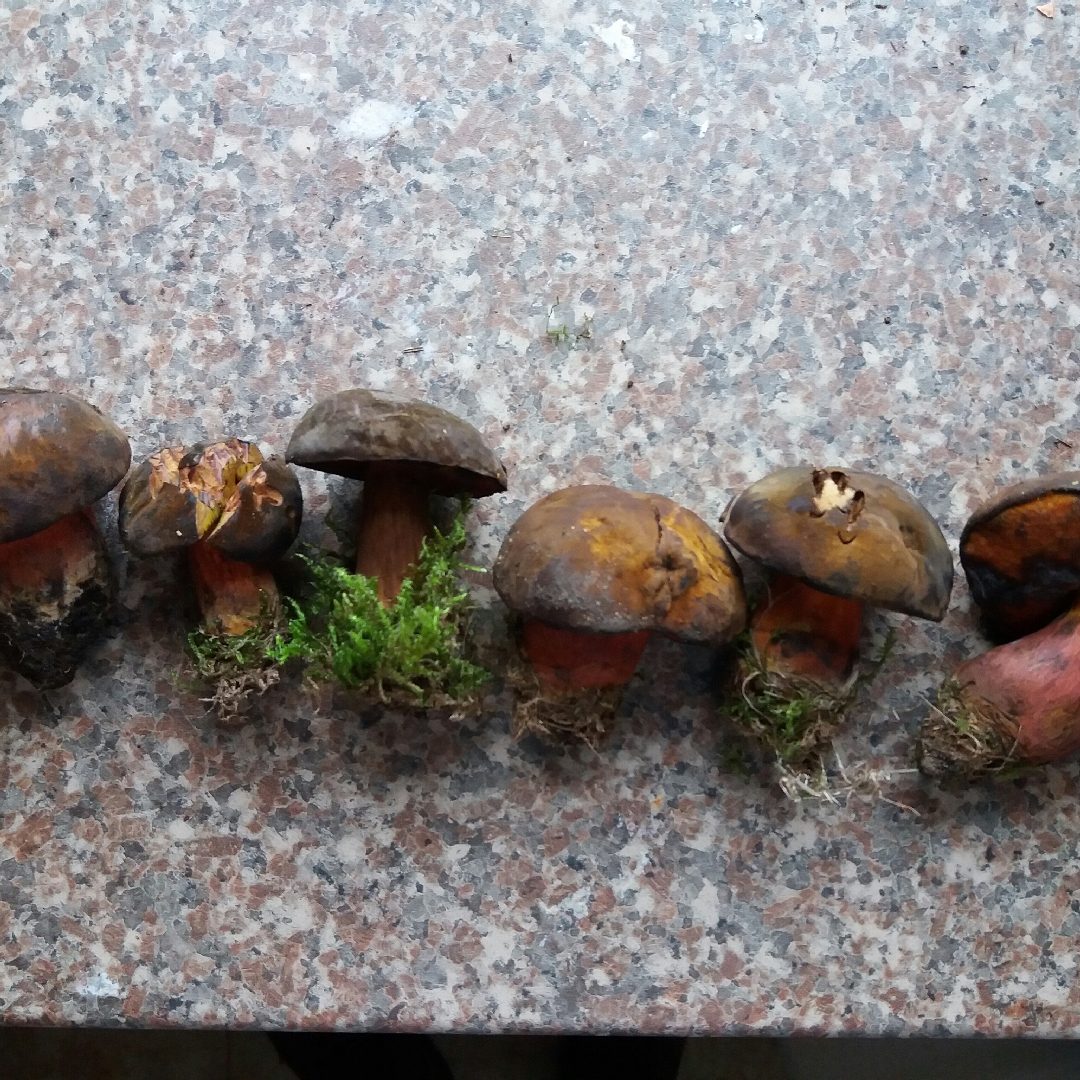
Neoboletus luridiformis
Red Pored Bolete
Original:Neoboletus luridiformis is reported to be edible, but this bolete could easily be confused with poisonous species such as Suillelus satanas. New:A mushroom is the edible fruiting body of a fungus. The edible part consists of a cap, gills and stem, and some grow above ground, some below ground. Care should be taken with identification, as some mushrooms are toxic. The Field Mushroom has a white hemispherical cap, sometimes with scales, that flattens out as it matures, and under the cap are pink gills that mature to brown. The stem can be up to 4" tall and has a single thin ring round it. Field mushrooms are usually found in fields after rain in late Summer
Contributed by @Beautifulform
-
Full sun to partial shade
-
Occasional watering
-
Not Frost hardy
-
Moist and fertile
Common name
Red Pored Bolete
Latin name
Neoboletus luridiformis
type
Fungus
family
Boletaceae
ph
6.3 - 8.0 Acid - Neutral
Plant & bloom calendar
-
Best time to plant
-
When to harvest
full grown dimensions
 0.10 M
0.10 M
0.10 M
0.10 M
Neoboletus luridiformis
Original:Neoboletus luridiformis is reported to be edible, but this bolete could easily be confused with poisonous species such as Suillelus satanas. New:A mushroom is the edible fruiting body of a fungus. The edible part consists of a cap, gills and stem, and some grow above ground, some below ground. Care should be taken with identification, as some mushrooms are toxic. The Field Mushroom has a white hemispherical cap, sometimes with scales, that flattens out as it matures, and under the cap are pink gills that mature to brown. The stem can be up to 4" tall and has a single thin ring round it. Field mushrooms are usually found in fields after rain in late Summer
Propagating by spores outdoors
From Mid Spring TO Early Autumn
Mushrooms can be grown outdoors from Spring to Autumn by lifting a square of grass (where no chemical fertilisers have been used), adding farmyard manure or compost and mixing it into the soil, then mixing the mushroom spawn in the soil to around 1 cm. deep. Replace the turf, and water in dry weather, but don't saturate. Growth depends on the weather. Mushrooms grow best in warm,damp weather
Planting
From Early Spring TO Late Winter
Due to the nature of fungi, planting is not an option
Propagating by spores indoors
From Early Spring TO Late Winter
A suitable bed or box needs to be prepared for growing mushrooms, where a depth of 10" compost can be contained. Mushrooms need 20 kgs. of compost per 100g of spawn, and a constant temperature of around 16 deg.C. The best compost is well-rotted horse manure, and it must be free of worms and invertebrates that will eat the spawn. After spreading the spawn and mixing it in to the top 1 cm. of the compost, keep the compost moist, but not wet. Providing the constant temperature can be maintained, mushrooms can be grown all year round.








